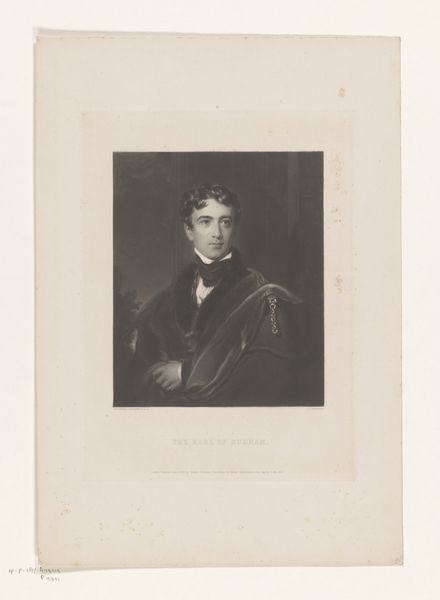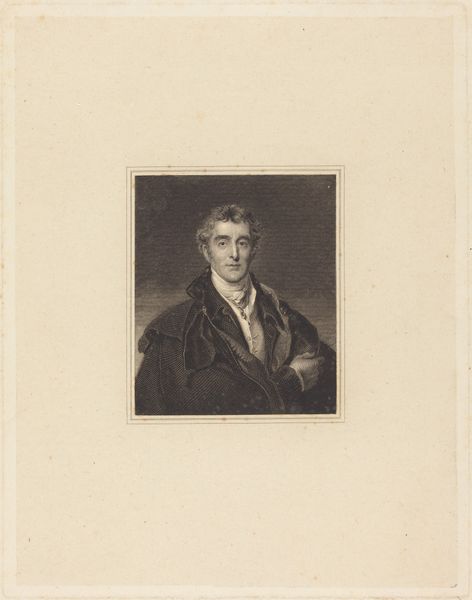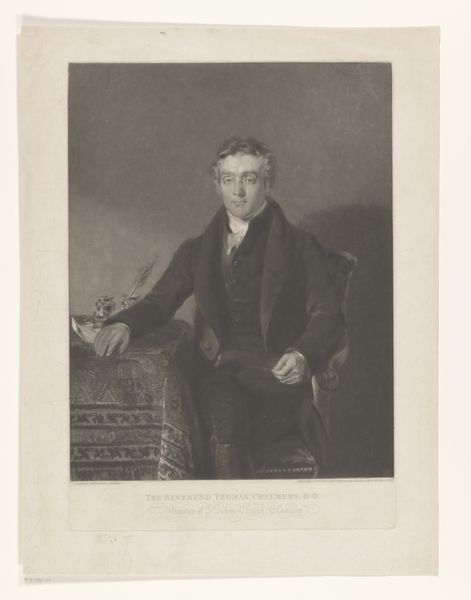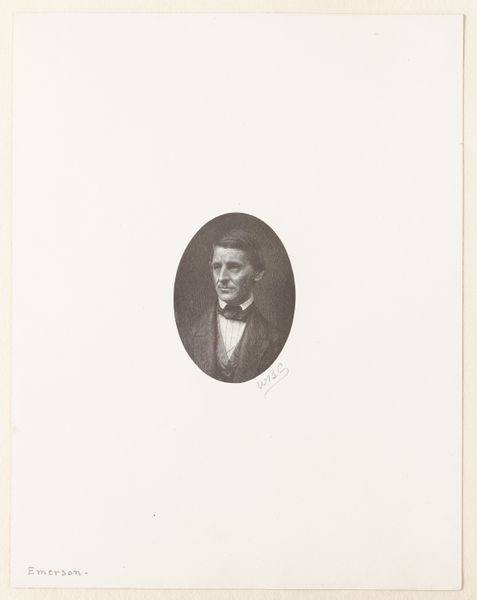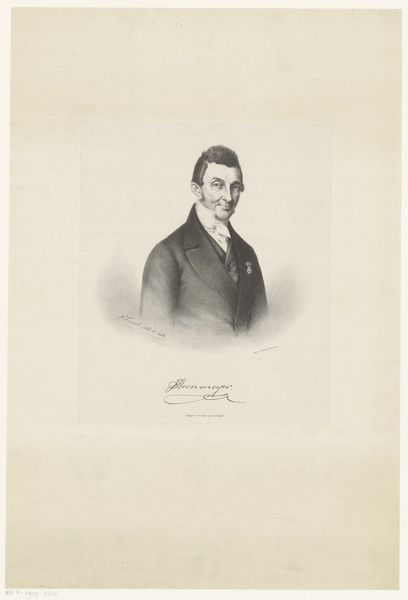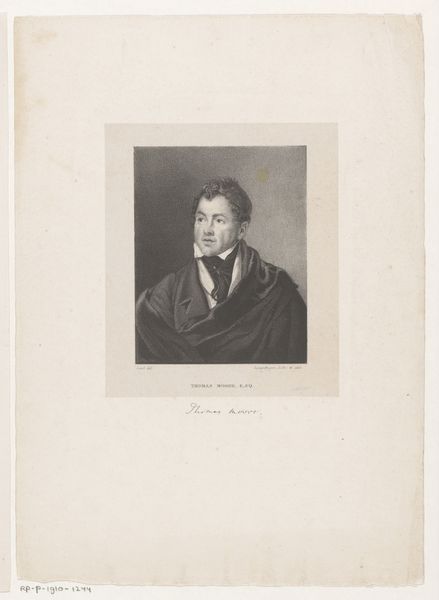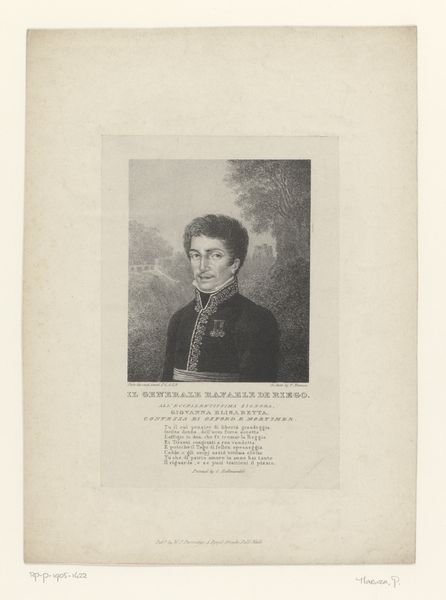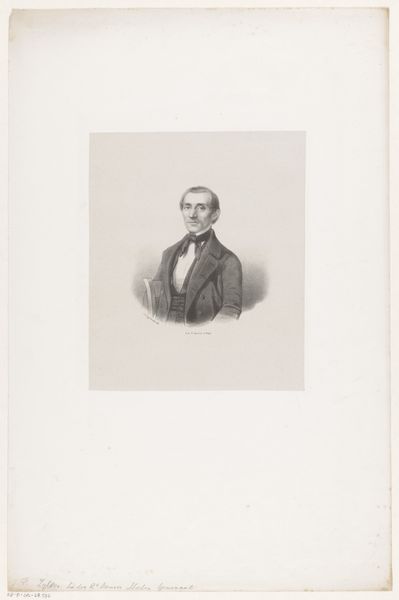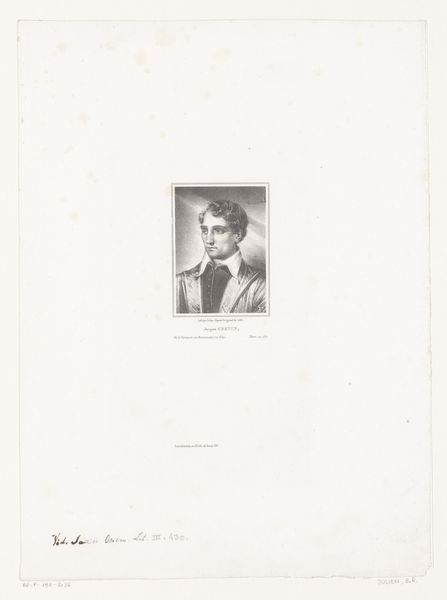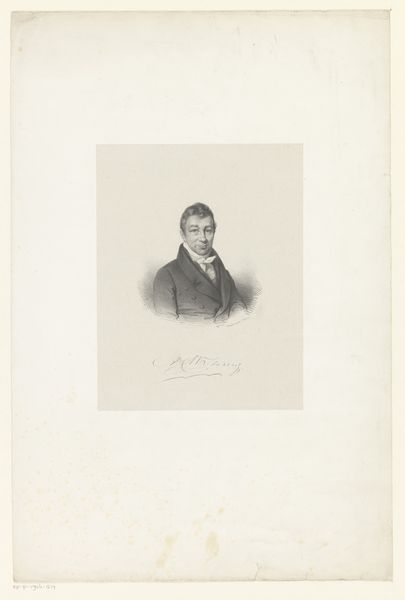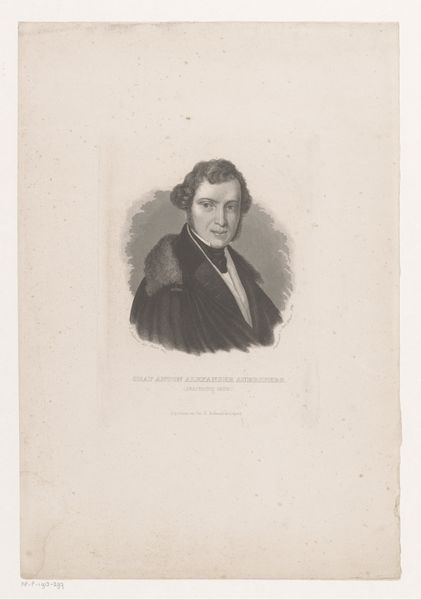
The Duke of Wellington, from Old English Masters Possibly 1899 - 1902
0:00
0:00
drawing, print, paper, engraving
#
portrait
#
drawing
# print
#
paper
#
pencil drawing
#
academic-art
#
engraving
Dimensions: 435 × 345 mm (sheet)
Copyright: Public Domain
Curator: Here we have Timothy Cole's engraving, "The Duke of Wellington, from Old English Masters," likely created between 1899 and 1902. What’s your initial take on this image? Editor: Well, the Duke certainly exudes a kind of quiet power. The stark black and white really highlights his gaze; there’s something very intense yet composed about his expression. A classic pose for someone of stature, wouldn’t you say? Curator: Absolutely. Engravings like this served a crucial purpose back then – reproducing paintings and making art accessible to a wider audience, beyond those who could visit galleries or own original pieces. What's interesting to me is Cole's masterful rendering of light and shadow, especially considering he’s working on a very unforgiving surface. He captures not just Wellington’s likeness, but a certain weight of authority, all through carefully etched lines. It is, as the inscription below states, printed on Japan paper. One of one hundred and fifty retre printed. Editor: Authority definitely permeates this image. But let’s think about Wellington for a moment: the Iron Duke, victor of Waterloo. That stern look could be read as resolve, or perhaps the weariness of command. Do you think viewers in Cole’s time saw him differently than we do today? Symbols always shift with the tide of history, don’t they? Curator: Undoubtedly. For Cole's contemporaries, Wellington was practically a mythical figure, representing British strength and imperial might. We look back and perhaps see the complexities and costs of such power a little more clearly. Cole's composition almost lends itself to the mythology, framing Wellington like a Roman bust. Editor: And that tightly knotted cravat, the restrained coat, and then the subtle hand gesture… each detail seems deliberately placed, doesn’t it? Are they echoing classical depictions of power? Are they building the Wellington image through visual repetition of earlier rulers? Curator: It's fascinating to consider. Cole isn't just replicating an image; he's participating in shaping and perpetuating a cultural narrative through a mass-producible form, which may be its most profound legacy. He's solidifying an archetype for future generations. Editor: The engraving process itself reinforces this idea of replication and cultural endurance. By using lines to craft such detail, it feels incredibly permanent and enduring. Not just an image, but an artifact loaded with history. Curator: Right, I feel I can trace and reimagine my cultural inheritance here; there’s almost a sense of archeological recovery. It's not just looking at a face; it's contemplating the layers of history etched into every line. Editor: Absolutely, what began as a simple engraving opens doors to a layered narrative and continues to ripple forward. Thank you, Wellington.
Comments
No comments
Be the first to comment and join the conversation on the ultimate creative platform.
